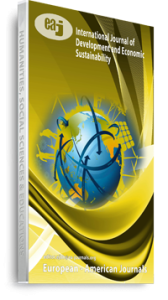East Asia and Latin America are two regions of great similarities and trajectories. Struggling with poverty and underdevelopment, many analysts classified them as regions of developing states. Today, countries like Japan, Korea and Taiwan are among the fastest growing in the World while Brazil, Mexico and Argentina are still struggling with huge societal inequality, institutional corruption, and extreme poverty. The scope of this paper is to identify key factors that are attributed to different developmental outcomes between East Asia and Latin America. This will be accomplished through a comparative analysis of state policies, sectoral growth and relationship to external trade and market vulnerabilities, between three countries from each region, Argentina, Brazil and Mexico from Latin America and Japan, Korea, and Taiwan from East Asia. The paper argues that the model of developmentalism implemented in Latin America never aimed to achieve societal equality or technological growth and was tormented by political instability, elite-controlled systems, and protectionism that had no relativity with global trade. On the contrary, East Asia identified its internal market weaknesses and was committed to generating macroeconomic stability, creating an ideal atmosphere for private investment and political stability.
Keywords: Asian tigers, Development, developmental theory, global south

